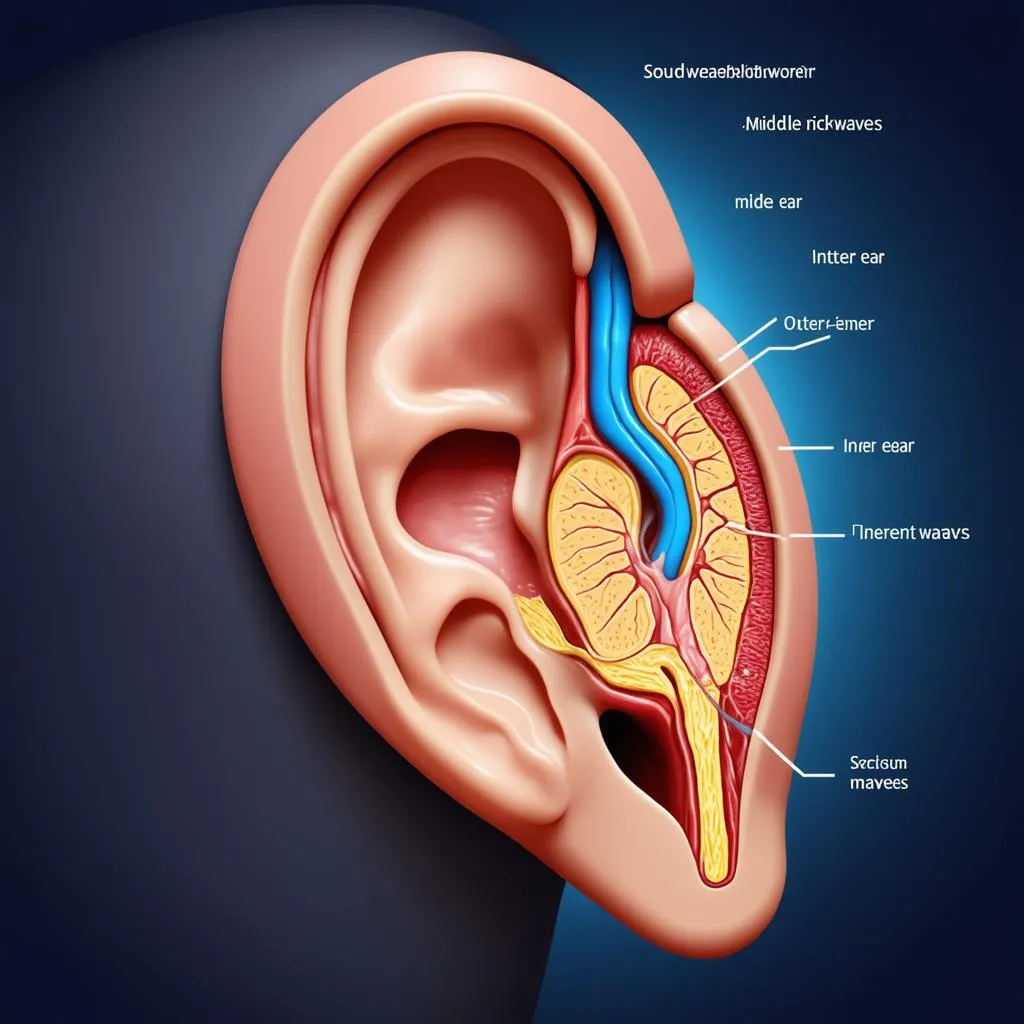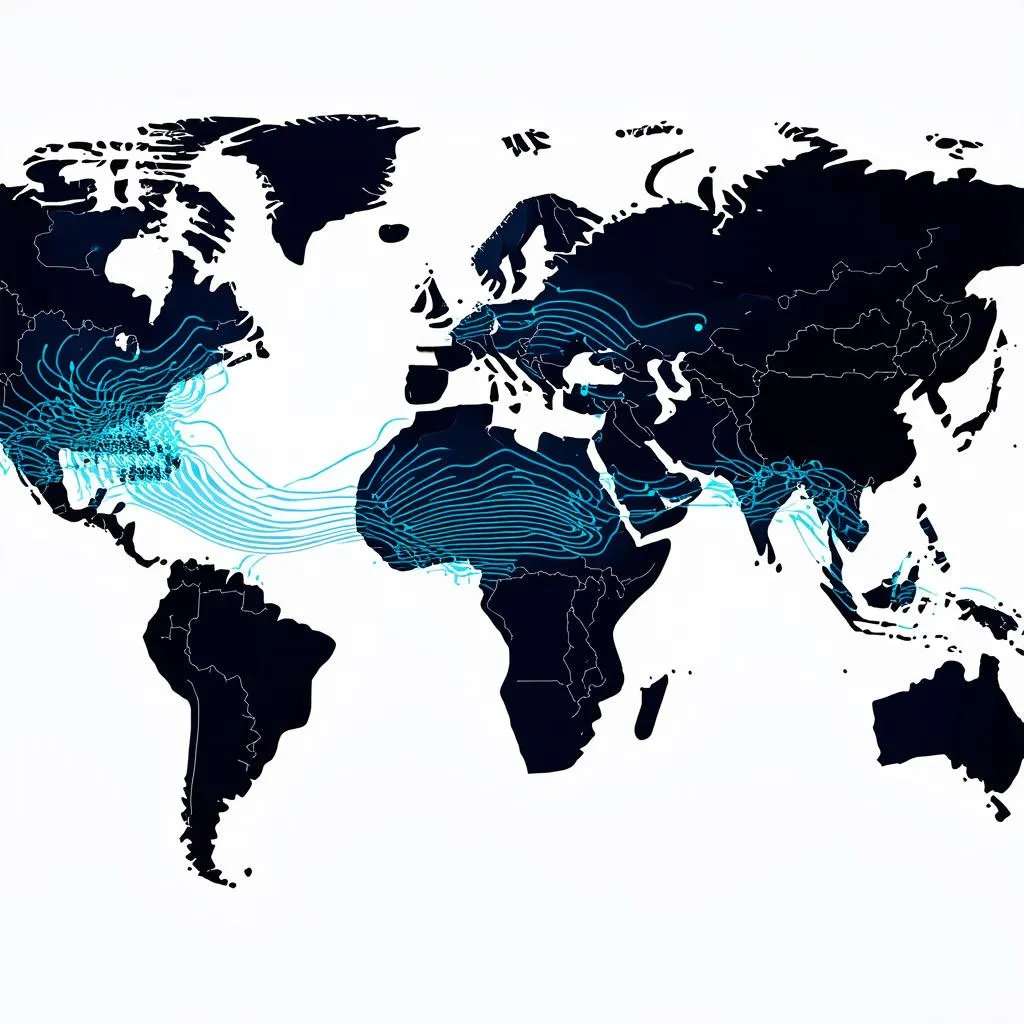Have you ever stood on the rim of the Grand Canyon, marveling at its vastness, and heard the faint echo of your own voice bounce back? Or perhaps you’ve been captivated by a street musician in the heart of New Orleans, their music seeming to weave its way through the air and straight into your soul? These experiences, diverse as they may seem, are all thanks to the fascinating way sound travels.
The Science of Sound Waves
Sound, unlike light, isn’t a magical phenomenon that just happens. It’s a form of energy that travels in waves, much like ripples spreading across a pond after you toss in a pebble. These waves, called sound waves, are actually vibrations that travel through a medium, such as air, water, or even solids.
Think of it like this: imagine you’re at a bustling market in Marrakech, surrounded by the vibrant chatter of vendors and shoppers. When someone speaks, their vocal cords vibrate, and these vibrations cause the air particles around them to vibrate as well. These vibrations, like a chain reaction, pass from one air particle to the next, creating a wave of pressure that travels outwards from the source.
The Speed of Sound
Ever noticed how you see lightning before you hear the thunderclap? That’s because light travels much faster than sound. The speed of sound is affected by the medium it travels through. In general, sound travels faster in denser mediums. For example, sound travels faster in water than in air, and even faster in solids like steel.
 Sound Waves Traveling
Sound Waves Traveling
Frequency and Pitch
The frequency of a sound wave determines its pitch – how high or low it sounds. High-frequency waves produce high-pitched sounds, like the chirping of birds in a rainforest canopy. Low-frequency waves produce low-pitched sounds, such as the deep rumble of a passing train.
Amplitude and Loudness
Amplitude, on the other hand, determines a sound’s loudness or volume. The larger the amplitude of a sound wave, the louder the sound. This explains why the roar of a lion in the Serengeti will be much louder than the whisper of the wind rustling through the savannah grasses.
How We Hear Sound
Our ears are incredibly intricate organs designed to capture these sound waves and translate them into something our brains can understand. The outer ear acts like a funnel, collecting sound waves and directing them into the ear canal. These waves then hit the eardrum, causing it to vibrate.
The middle ear, a small air-filled chamber, amplifies these vibrations and transmits them to the inner ear. The inner ear contains the cochlea, a spiral-shaped structure filled with fluid and tiny hair cells. These hair cells are stimulated by the vibrations and send electrical signals to the brain via the auditory nerve. The brain then interprets these signals as sound, allowing us to perceive and appreciate the world around us.
 Human Ear Anatomy
Human Ear Anatomy
Sound and Travel
Sound plays a crucial role in our travel experiences, often shaping our memories and perceptions of a place. Imagine standing in the heart of Rome, the air filled with the melodic ringing of church bells, the laughter of children playing in piazzas, and the gentle hum of conversations in countless languages. These sounds, woven together, create a unique sonic tapestry that becomes intrinsically linked to our experience of the Eternal City.
“Sound is a powerful tool that can transport us back to a specific time and place,” says travel writer and sound recordist, Sarah Jones, author of “The Sound of Place: Exploring the World Through Its Sonic Landscapes.” “By paying attention to the soundscape of a place, we can deepen our connection to its culture, history, and environment.”
Planning Your Sonic Journey
Interested in exploring the world through sound? Here are some tips for planning your own sonic adventure:
- Seek out unique soundscapes: From the bustling marketplaces of Istanbul to the tranquil temples of Kyoto, every destination offers its own symphony of sounds.
- Pack a pair of noise-canceling headphones: While embracing the sounds of a new place is important, sometimes you need a break from the sensory overload.
- Record your own sonic souvenirs: Use your phone or a portable recorder to capture the sounds that resonate with you most. These recordings will serve as evocative reminders of your travels long after you return home.
- Learn about the local music: Music is a universal language that reflects the soul of a culture. Attend a concert, visit a music store, or strike up a conversation with a local musician to learn more about the music of your destination.
FAQs about How Sound Travels
Q: Does sound travel faster in hot or cold air?
A: Sound travels faster in hot air because the molecules are moving faster and can transmit vibrations more quickly.
Q: Can sound travel through a vacuum?
A: No, sound cannot travel through a vacuum because there are no particles to carry the vibrations.
Q: How does the shape of a room affect sound?
A: The shape of a room can affect sound reflections and echoes. Hard surfaces can cause sound to bounce around, while soft surfaces absorb sound waves.
Q: What is the Doppler Effect?
A: The Doppler Effect is the change in frequency of a wave (like sound) as the source and observer move towards or away from each other. Think of the changing pitch of a siren as an ambulance approaches and then passes you.
Conclusion
Understanding how sound travels allows us to appreciate the symphony of our world on a deeper level. From the whisper of wind through ancient ruins to the vibrant music of a bustling city, sound enriches our travel experiences and creates lasting memories. So, the next time you’re exploring a new destination, take a moment to close your eyes and truly listen. You might be surprised by what you discover. And for more travel tips and insights, be sure to visit travelcar.edu.vn.
 World Map with Sound Waves
World Map with Sound Waves